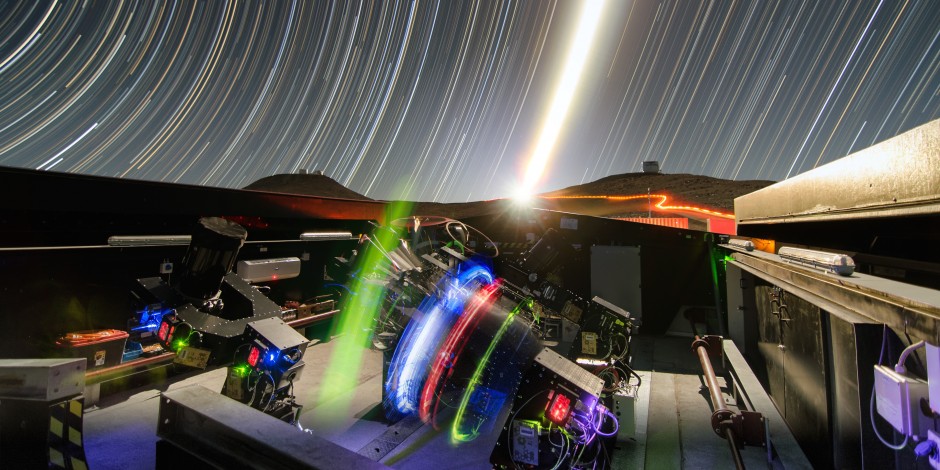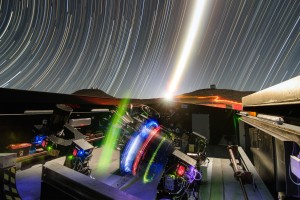It rained on the NGTS

The Next Generation Transit Survey (NGTS) witnessed a rare event for a site like Paranal in Chile. The rain fell into the NGTS building and on other telescopes, an incident which showed the flaws of warning systems based on the measurement of moisture.

The telescopes of the Next-Generation Transit Survey (NGTS) at ESO’s Paranal Observatory in northern Chile during testing. Photo: ESO/G. Lambert
The weather was beautiful that day at Paranal, the VLT site in Chile, when suddenly a small cloud formed above the ESO site. Apperently, the cloud appeared to be “safe” since the hygrometers indicated a humidity around 10 to 15%, while closing the domes would be commanded only when this value exceeds 70% or 80%. The domes were wide open but rain began to fall. “It seems that it can happen,” says Bruno Chazelas member of PlanetS, “but no one saw the phenomenon arrive, and we had to close manually the domes urgently,” adds the chief optician of the project. This incident now adds an additional constraint to the system which is supposed to work robotically without on-site human intervention.
It’s not just the humidity that can play tricks on NGTS astronomers, the rain itself can not be detected in time. NGTS is however equipped with a rain sensor able to detect a single drop of water which should trigger the closing of the dome. But what happened is that the drops were sufficiently spaced out so they would avoid falling into the rain sensor as the distance between the drops was larger than the aperture of the instrument. It’s raining but the rain gauge does not “see” anything. The dome stayed open until the rain became dense enough to trigger the alert. The NGTS designers are therefore forced to modify their rain sensor by increasing its aperture.
NGTS is composed of 12 independent telescopes of 20 cm diameter each, which will for ten years image fields in the sky which contain hundred thousands of stars in the hope of detecting a few hundred of super Earth sized planets. “We have not yet reached the accuracy needed to achieve our goal” Bruno Chazelas concedes, “but one thing is sure, it is not the rain that will prevent us.” (pb)
Categories: Internal Newsletter
